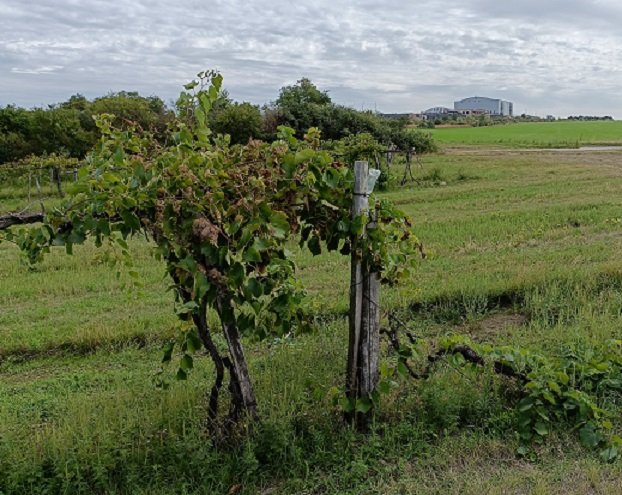My crazy #harvest2022 adventure is under way.
I plan to make eight wines in four countries in one vintage.
I know my limitations as a winemaker, so I am teaming up with people who know what they are doing. But I will be encouraging them to experiment or try something different – perhaps a technique that I’ve picked up from writing the winemaker interviews for Canopy.
The first wine is an unusual méthode traditionnelle featuring a unique blend of a disease-resistant variety and a grape that’s better known for producing still wines.
For this experiment, I’ve come to an up-and-coming sparkling wine region – Etyek-Buda, about 30km west of Hungary’s capital, Budapest. Etyek-Buda is Hungary’s first PDO (Protected Designation of Origin) for sparkling wines, and the first releases of ‘Etyeki Pezsgő’ are due in 2023, from the 2020 vintage.
The winemakers behind the Etyeki Pezsgő wines are trying to rebuild the reputation of Hungarian fizz and restore the beautiful town of Etyek to its place among the great wine capitals. József Törley was the first to recognise the region’s potential after returning from an apprenticeship at Louis Roederer in Reims at the end of the 19th century. He realised this cool region – with its limestone soils – had a good deal in common with the Champagne area and set up a winery for sparkling wine production in Budafok, south of Budapest. The business grew rapidly and Törley exported his wines around the world, setting up warehouses in Hamburg, Berlin, Copenhagen, and Paris to cope with demand from Germany, Scandinavia and France!
Two world wars, nationalisation and a switch in focus to high quantities for the Russian market erased the region’s reputation. But, since the fall of the Iron Curtain, there have been swift changes in winemaking in Etyek, with a return to private and family winemaking enterprises and renewed interest in producing high-quality sparkling wines.
My favourite wine from the region so far is Nádas Borműhely’s GV Brut Nature 2019 – 100% Grüner Veltliner, with 30% fermented in barrels. I loved the delicately spicy, almost peppery finish.
This wine meets two of the new PDO’s strict criteria:
But it fails on the crucial third point:
Grüner Veltliner is not one of the four permitted grape varieties for Etyeki Pezsgő. Although it’s one of the 40 authorised varieties grown in the region, the PDO regulations have restricted the permitted varieties to Chardonnay, Pinot Noir, Pinot Gris and Pinot Blanc.
Tamás Hernyák, of Etyek family winery Hernyák Estate and one of the driving forces behind the PDO application, admits that changes to the permitted varieties are possible in the future but these four are “a solid foundation, a good starting point”.
They want the region to become known for sparkling wines with medium intensity aromas of biscuit, roasted nuts and breadcrust, an elegant fruitiness on the palate, harmonious acidity, creamy texture and velvety bubbles.
That’s what I’m aiming for with my wine, but with less traditional grape varieties…
Before Törley opened his winery in 1882, the main grape varieties in the region were Kadarka, Dinka, Gohér, Rakszőlő, Hárslevelű, Mézes Fehér, and Sárfehér. By the mid-1970s, the key varieties were Mézes Fehér, Ezerjó, Hárslevelű and Olaszrizling (Welschriesling), with the Department of Viticulture of the University of Horticulture adding Chardonnay, Királyleányka, Rizlingszilváni, and Zöld veltelini (Grüner Veltliner). Another influx of new varieties came to the region in the 1980s, with large-scale plantings of Szürkebarát (Pinot Gris), Pinot Blanc, Sauvignon Blanc, Irsai Olivér, Riesling, Muscat Ottonel and more Olazsrizling. There were also experimental plantings of Hungarian-bred grape varieties including Cserszegi fűszeres, Zenit, Zefír, Zengő, Karát, Mátra Muscat, and Viktória Gyöngye.
As well as using barrel- and tank-fermented Grüner Veltliner in my sparkling wine, I’m also going to use one of these Hungarian hybrids.
The winemaker behind my favourite Grüner Veltliner sparkling wine, Szilárd Nádas, also mentioned that he made a sparkling wine from Viktória Gyöngye, which translates as Pearl of Victoria. It’s not a grape I’ve come across before and a quick search on the internet revealed… absolutely nothing. I was intrigued.


































